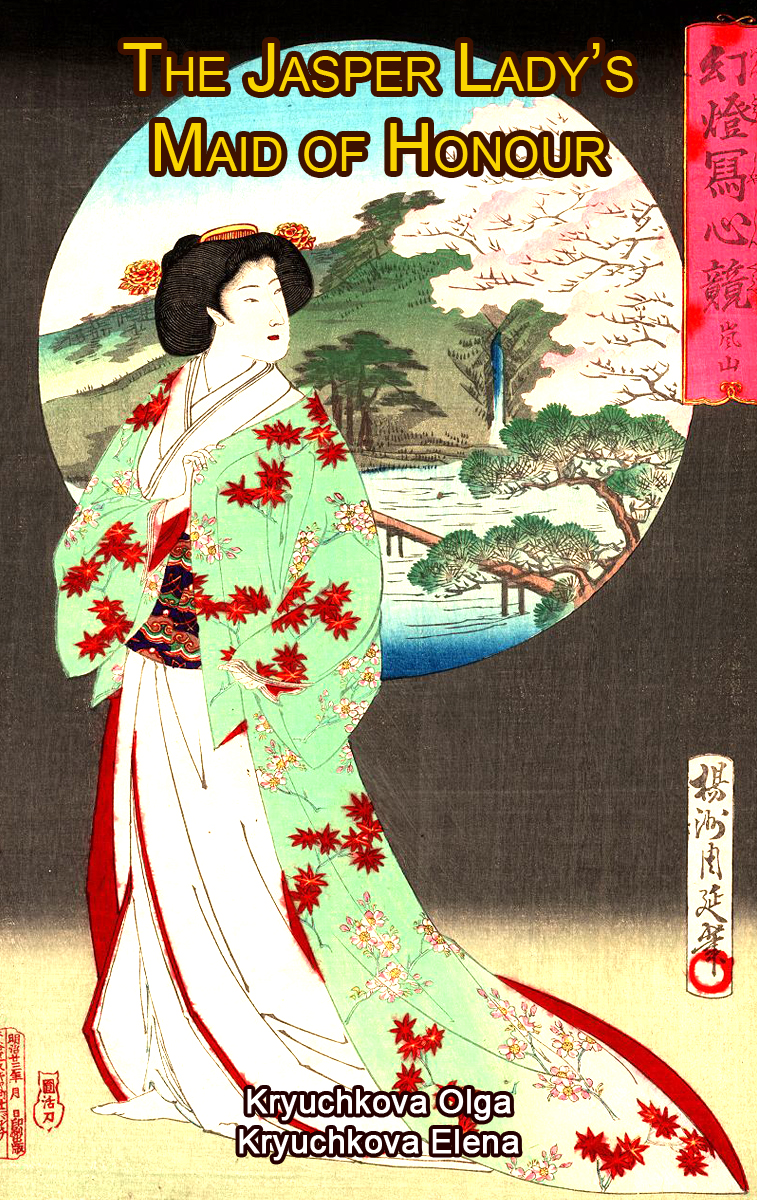
translator from Russian Balazs Istvan Cserhati
Japan, the Heian era. Young Ono no Komachi commits to serving the imperial court as the maid of honour of one of the concubines. She soon is confronted with some inexplicable phenomenon: a mysterious golden flying palanquin appearing in the outskirts of the capital.
The young maid of honour marries a most outstanding officer. However he dies in a campaign designed to quell an uprising in a remote province. In an effort to subdue her anguish over the loss the maid of honour indulges in the making of poetry. The empress, Lady Jasper holds Ono no Komachi’s work of art in high esteem and before late the girls joins her as her maid of honour. Unbeknownst to her she is yet to disclose the secret of the Plum pavilion, disentangle a row of mysteries in the capital furthermore botch an attempt against the empress.
Genre: FICTION / Mystery & Detective / GeneralThe novel was published in Russia in the publishing house Veche and showed active sales and positive feedback from readers.
Second year of the reign of emperor Ninmyö[1], Heian.
The golden rays of the early morning springtime sun cast a faint light on the city called Heian[2] or Heian-kyu. The capital of peace and serenity. Also known as ‘Miyako’ that means ‘capital’.
It was constructed according to the meshlike pattern of Chengyang[3], the capital of China. It bore a rectangular shape and was surrounded with a moat.
The streets stretched out in even lines dividing the city like straight lines a Chinese paper. The first lines in the northeast borough of the city, closer to the court of the mikado[4], hosted the homes of the court aristocracy. They were scattered between the First and Second Lines where the streets of Tsutimikado, Konoe, Nakamikado and Onmikado intersected with the highways of Higashino-Toni, Nishino-Toni and Horikawa. Right when the final touches of the construction concluded, high nobility began shifting to the city from the provinces with the conviction that the possession of a property there would improve their status. The prices of these domiciles in turn grew exorbitantly. Provincial and urban aristocrats alike were dreaming of obtaining an abode as near the the imperial court as possible. And many delivered on those dreams indeed. As a result the First and Second Lines were inhabited by dignitaries, aristocrats and money bags who actually had made it.
As from the Third Line and farther out stood the homes of less accomplished officials and residents of Heian.
[1] Emperor Ninmyö – a historical character, lived from 810 until 850, ruled from 833 until 850. The second year of his reign corresponds to 835 A.D.
[2]The former name of Kyoto. It spread to a length of 4.5 kilometres from east to west and 5.3 kilometres from north to south.
[3]Currently Hsian.
[4]Another name of the Japanese emperors.
| Language | Status |
|---|---|
|
Afrikaans
|
Unavailable for translation.
|
|
Arabic
|
Unavailable for translation.
|
|
Bulgarian
|
Unavailable for translation.
|
|
Chinese
|
Unavailable for translation.
|
|
Czech
|
Unavailable for translation.
|
|
Danish
|
Unavailable for translation.
|
|
Dutch
|
Unavailable for translation.
|
|
Estonian
|
Unavailable for translation.
|
|
Finnish
|
Unavailable for translation.
|
|
French
|
Unavailable for translation.
|
|
German
|
Unavailable for translation.
|
|
Greek
|
Unavailable for translation.
|
|
Hindi
|
Unavailable for translation.
|
|
Icelandic
|
Unavailable for translation.
|
|
Indonesian
|
Unavailable for translation.
|
|
Irish
|
Unavailable for translation.
|
|
Italian
|
Unavailable for translation.
|
|
Japanese
|
Unavailable for translation.
|
|
Malay
|
Unavailable for translation.
|
|
Norwegian
|
Unavailable for translation.
|
|
Polish
|
Unavailable for translation.
|
|
Portuguese
|
Unavailable for translation.
|
|
Romanian
|
Unavailable for translation.
|
|
Russian
|
Unavailable for translation.
|
|
Sinhala
|
Unavailable for translation.
|
|
Slovenian
|
Unavailable for translation.
|
|
Spanish
|
Unavailable for translation.
|
|
Swedish
|
Unavailable for translation.
|
|
Thai
|
Unavailable for translation.
|
|
Turkish
|
Unavailable for translation.
|